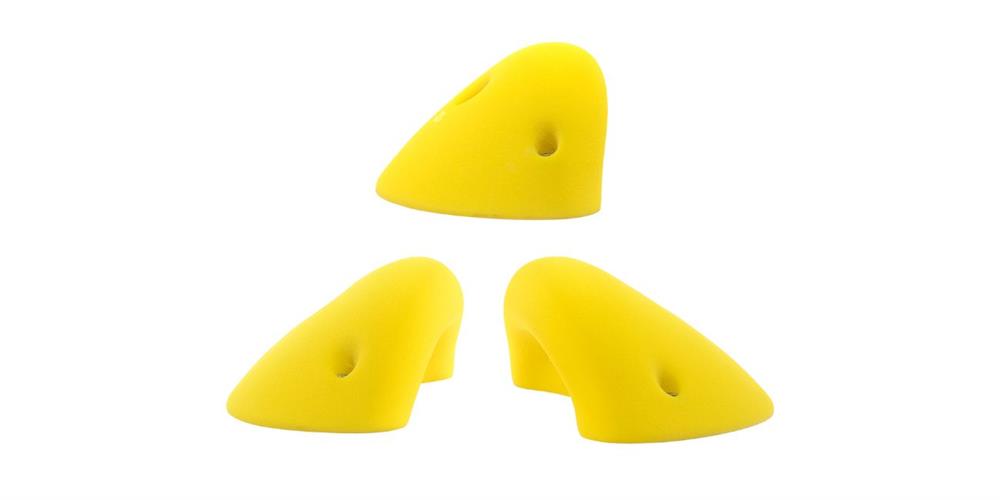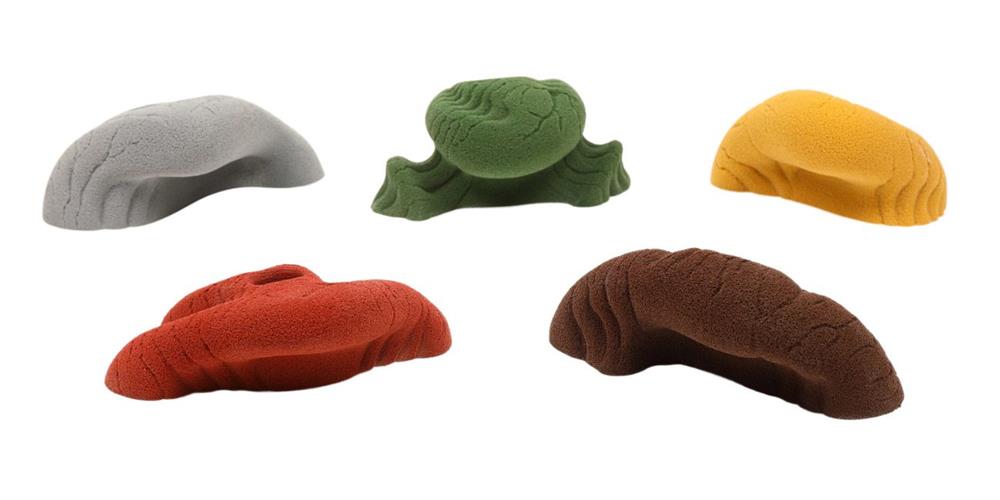Rock climbing is an exhilarating sport that combines physical prowess with mental agility. The sport’s core relies on one fundamental skill: grip. The ability to effectively hold onto climbing surfaces makes or breaks a climber’s ascent. Here are several insights to know about the grip on climbing holds to improve your next climb.
Understanding Climbing Holds
Climbing holds come in various shapes and sizes. Each climbing hold design tests different aspects of a climber’s skill set. From tiny crimps to broad slopers, these holds require a skillful approach.
Your grip determines your ability to maintain contact and control while climbing. When you can properly leverage each hold, you’re achieving the first step to improving your climbing performance.
Crimp holds are small ledges that demand finger strength. Jugs are large, easy-to-grip holds that provide rest points. Each hold challenges a climber’s adaptability, skill, and grip strength. Familiarize yourself with these holds to better plan your climbs and develop a more versatile grip strategy.
Types of Grips on Climbing Holds
Climbers use numerous approaches to scale a rock wall. However, it’s important to learn which hold will serve you best as you climb. Learn the purpose of each grip, how to achieve it, and when to use the grip, so you can rise to the top with ease.
Open Hand Grip
The open-hand grip is a foundational technique for climbers. Lay your fingers flat against the hold to maximize surface area contact. While it may feel less secure than other grips, mastering the open-hand technique greatly strengthens your ability to tackle diverse routes. This grip is less taxing on the tendons and allows for better endurance on longer climbs.
Crimp Grip
The crimp grip involves curling the fingers into a bent position, creating more friction on small holds. Mastering this grip provides climbers with tremendous power to tackle tiny edges.
However, climbers must balance power and caution when employing the crimp grip. It places considerable stress on the tendons, so it’s crucial to use it judiciously.
Pinch Grip
Pinch grips require squeezing the sides of a hold between the thumb and fingers. This grip is particularly effective for holds with pronounced edges or volumes.
Develop thumb strength to increase your stability and control on challenging routes. With ample practice, you’ll build the hand strength needed for successful pinching.
Sloper Grip
Sloper holds are smooth, rounded surfaces that challenge climbers to rely more on friction than a secure grip. The sloper grip requires open-palm contact with the hold. The climber must precisely position their body to establish their balance. Although slopers create challenging routes, they offer valuable opportunities to refine techniques and build confidence.
Jug Grip
The jug hold is a large, easy-to-grip hold that provides a rest point. Wrap your fingers and thumb around the hold to establish a secure anchor.
While jug holds offer respite, they also allow climbers to regroup and strategize for upcoming sections. Use this grip to conserve energy and maintain focus on longer routes. Mastering the jug grip is essential, especially when you add climbing roof jugs to your wall for a more challenging setup.

Techniques To Improve Grip Strength
Improving grip strength is a critical aspect of enhancing climbing performance. Consistent training routines targeting finger and hand muscles will heighten your ability to tackle challenging routes. Incorporate various exercises into your routine to conduct steady and progressive growth.
Atomik Climbing Holds’ fingerboards and hang boards are excellent tools for increasing finger strength. Use these boards to practice hangs of varying intensity and duration that will develop the finger muscles necessary for stronger grips. Adding weight or using smaller holds gradually increases the difficulty of supporting continuous improvement.
Additionally, incorporate wrist curls, reverse curls, and grip squeezes to target all areas of your hand and forearm. Creating a well-rounded training plan with general strength exercises and grip-specific drills is essential.
Grip Techniques for Beginners
Climbing grip is a fundamental skill of rock climbing. For beginners, understanding and executing climbing grips may feel overwhelming. Start with basic grip techniques to build a strong foundation.
The open-hand grip is an excellent starting point for beginners. Focus on maximizing contact with the hold while maintaining relaxed fingers.
A common mistake is over-gripping holds, which leads to rapid fatigue. Maintain a relaxed grip whenever possible to conserve energy for challenging sections. Remembering these tips will ensure that beginners start their journey on the right foot.
Advanced Grip Techniques
Transitioning to advanced grips is an excellent milestone in a climber’s progression. Implementing multiple grips allows climbers to adapt to complex routes.
Advanced climbers often experiment with combining multiple grips on a single hold. Certain routes require climbers to combine grips to tackle diverse hold shapes and orientations. The transition from an open hand to a crimp or pinch grip mid-climb provides substantial stability. Developing the ability to transition between grips will improve efficiency and reduce fatigue.
Practice on varied terrain to expose yourself to different scenarios that challenge your adaptability. Honing this skill will help you confidently approach complex climbing routes.

The Role of Body Positioning in Grip
Improving your grip strength and climbing efficiency relies on body positioning. Proper alignment and weight distribution affect a climber’s ability to maintain a secure hold. Mastering body positioning techniques will optimize each hold and elevate your climbing performance.
A climber’s primary source of balance comes from their center of gravity. Keeping your body close to the wall minimizes the effort required to hold onto the climbing surface. Leaning too far or too little shifts your weight distribution and hinders the effectiveness of your grip. Focus on holding a balanced stance, allowing your legs to support your weight and reduce the load on your arms.
Proper foot placement is key to optimizing body positioning. Use your legs to drive upward movements. Climbers use this strategy to relieve pressure on their hands. Developing the ability to pivot and shift weight will improve your stability and control.
The Importance of a Climber’s Grip Performance
Grip strength determines a climber’s overall performance. Strong grip capabilities push climbers to their limits and encourage them to tackle challenging routes. It influences your capacity to hold onto small holds, execute dynamic movements, and maintain control during challenging sequences. With substantial grip strength, you can confidently approach difficult climbs and perform your best.
Knowing about the grip on climbing holds, how to use them, and various training techniques for each skill level will elevate your performance. Start implementing these practices today to build your grip strength and proficiency in the sport.




Leave your comment